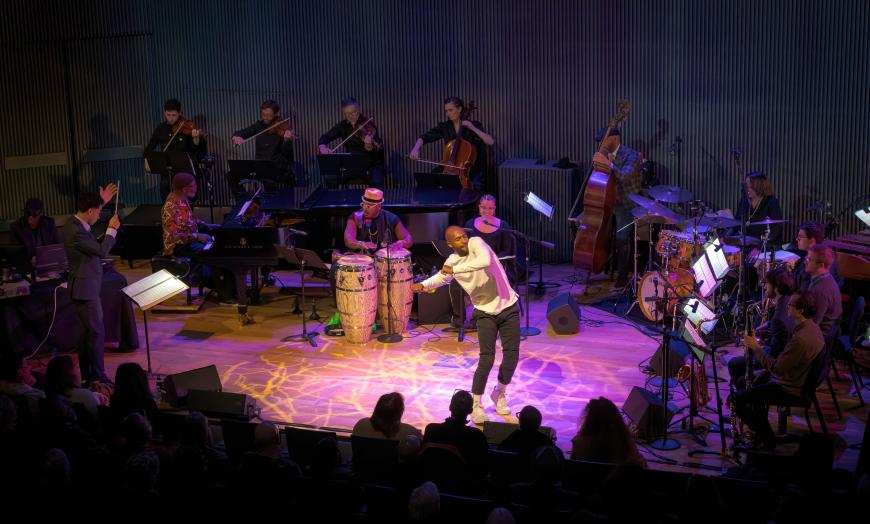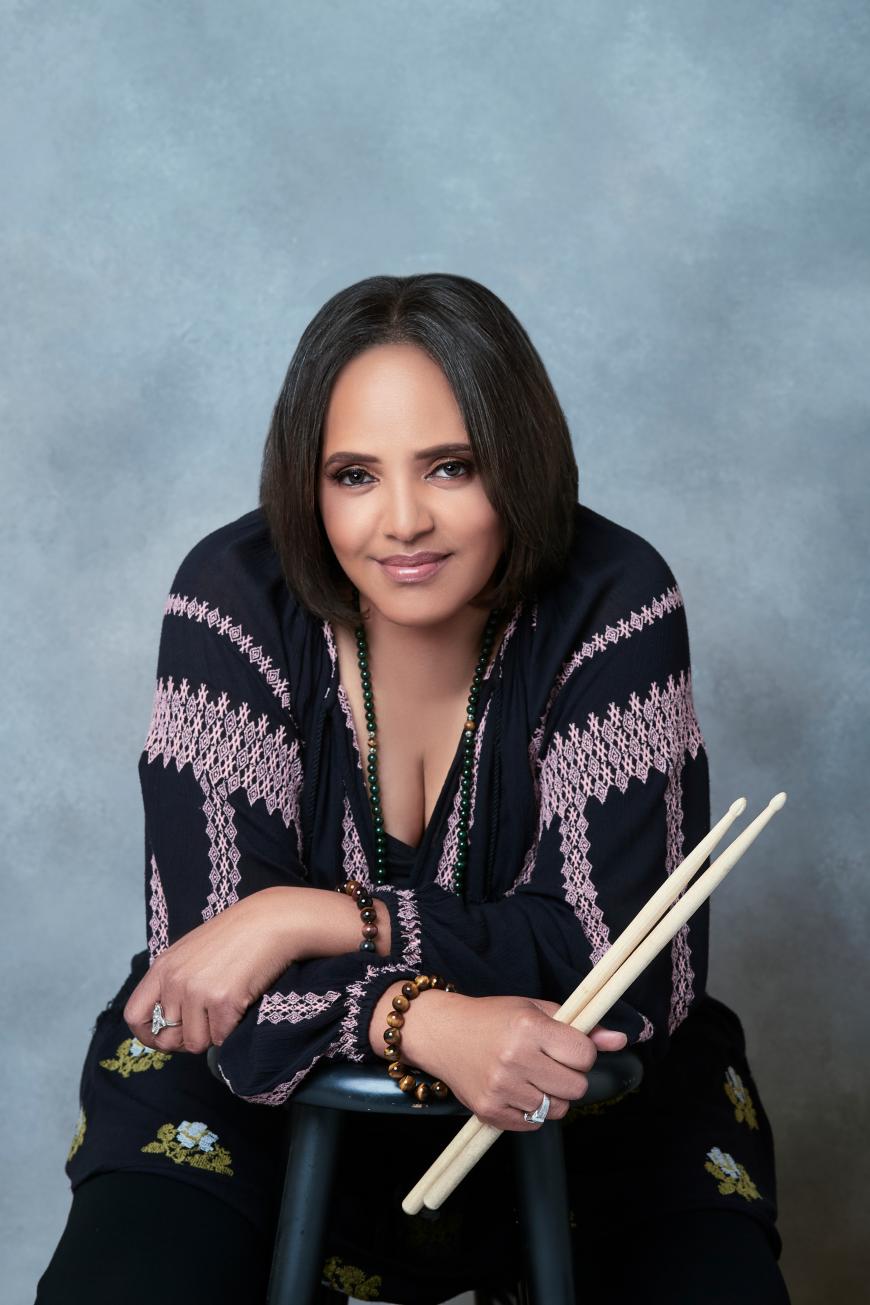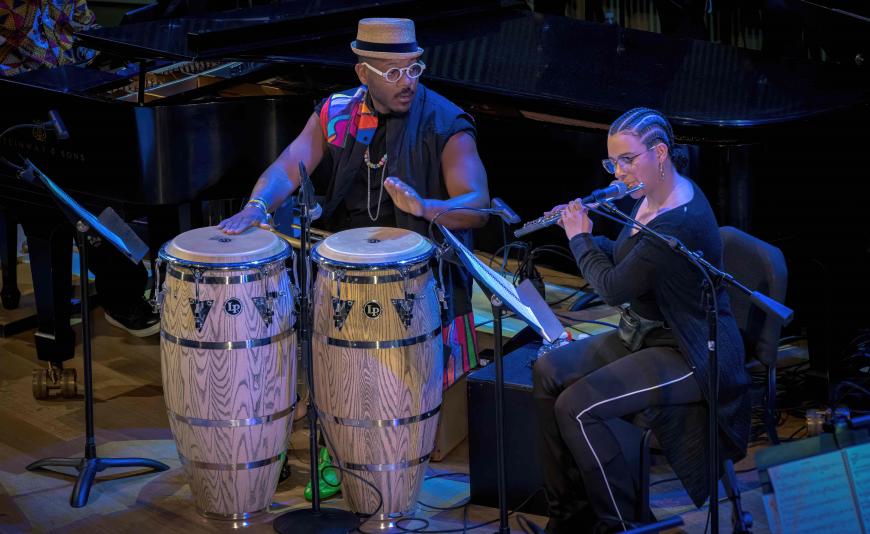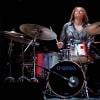
The SFJAZZ Center is in the midst of its 10th season, but its flagship Miner Auditorium is still evolving as a space for creative activization. It’s not surprising that it was protean artist Terri Lyne Carrington who found new ways to stretch the room’s possibilities last weekend.
Far more than a virtuosic drummer, Carrington is a composer, educator, bandleader, producer, and jazz activist who’s staked out a vanguard role in opening new opportunities for women instrumentalists and composers. That advocacy role was front and center Friday, the second event in her four-night run as an SFJAZZ resident artistic director, with her sextet performance focusing on music from her Grammy-winning CD New Standards Vol. 1, a century-spanning project that makes overlooked tunes by women composers widely available.

If New Standards is all about establishing the undeniable visibility of women composers in jazz, Saturday and Sunday’s concerts sought to manifest subterranean realms. In exploring the tribulations, resilience, and spiritual creativity of Black women, Carrington brought her four-part suite Seen/Unseen into Miner Auditorium, crafting an ambitious multimedia work that unfolded throughout the room.
Commissioned by the Massachusetts Institute of Technology, the original piece, It Must Be Now!, debuted in May 2022 and featured a much larger orchestral ensemble. In distilling the work for Miner Auditorium, Carrington drew on available resources, including the always-game Del Sol String Quartet, a wind quartet from the San Francisco Conservatory of Music (saxophone, clarinet, trombone, and French horn), and Alonzo King LINES Ballet dancer Babatunji Johnson, who’s become a go-to collaborator for multimedia productions (like Vân-Ánh Võ’s three-part suite Songs of Strength).
Effectively deploying Miner Auditorium’s state-of-the-art projection system, multidisciplinary artist Mickalene Thomas created live visuals in response to the music and dance, sending multihued geometric shapes and grid-like patterns cascading against the back wall, interpolated with polarized film clips and photos drawn from newsreels and old films. Carrington’s music danced between thick, brightly contrasting themes featuring the full ensemble and open sections that beautifully showcased master improvisers like flutist Elena Pinderhughes, trumpeter and conga player Etienne Charles, and Simon Moullier on marimba and vibraphone.
Carrington built the ensemble on the nonpareil rhythm section tandem of pianist Orrin Evans and bassist Eric Revis, who’ve played hundreds of gigs together in Evans’s trio, the collective quartet Tarbaby, and other situations. Opening with an abstract passage full of skittering pizzicato lines from Del Sol, Seen/Unseen proceeded as a series of cathartic revelations, building to a gospel-infused passage by Evans that grounded the work with intimations of transcendence.
As effective as some of the full-ensemble passages were, the music was at its most exciting when the strings and winds dropped out and the jazz players stretched out over a matrix of percussion. Johnson first briefly appeared in the opening section, moving across the walkway behind the stage with a loose-limbed bounce. Reappearing in the third movement, he gave a dazzling performance that seemed to physically manifest the music’s curvaceous contours, including some breakdance spins that keyed on Carrington’s crisp cymbal flow.

In many ways, experiencing the suite illustrated the conundrum of multimedia musical events. Call it the dialectic of seeing and unseeing. When the music was at its most intense, it absorbed my attention, and I didn’t think to look up to scan the projections. When I found myself caught up in the visuals, it was usually because a passage felt like it was setting a scene, or momentarily slack. With the sensuous musicality of his dancing, Johnson provided the synthesis.
Seen/Unseen marks Carrington’s rapidly deepening ties to SFJAZZ, which include her serving as music director for the organization’s 2020 online production celebrating the NEA Jazz Master Fellowships. Coincidentally, Carrington was on hand again in 2021 when she herself was named an NEA Jazz Master, the nation’s highest honor for the art form. Her presence in the building always augurs something important, and with Seen/Unseen she made it clear the space has yet to reach its potential.



